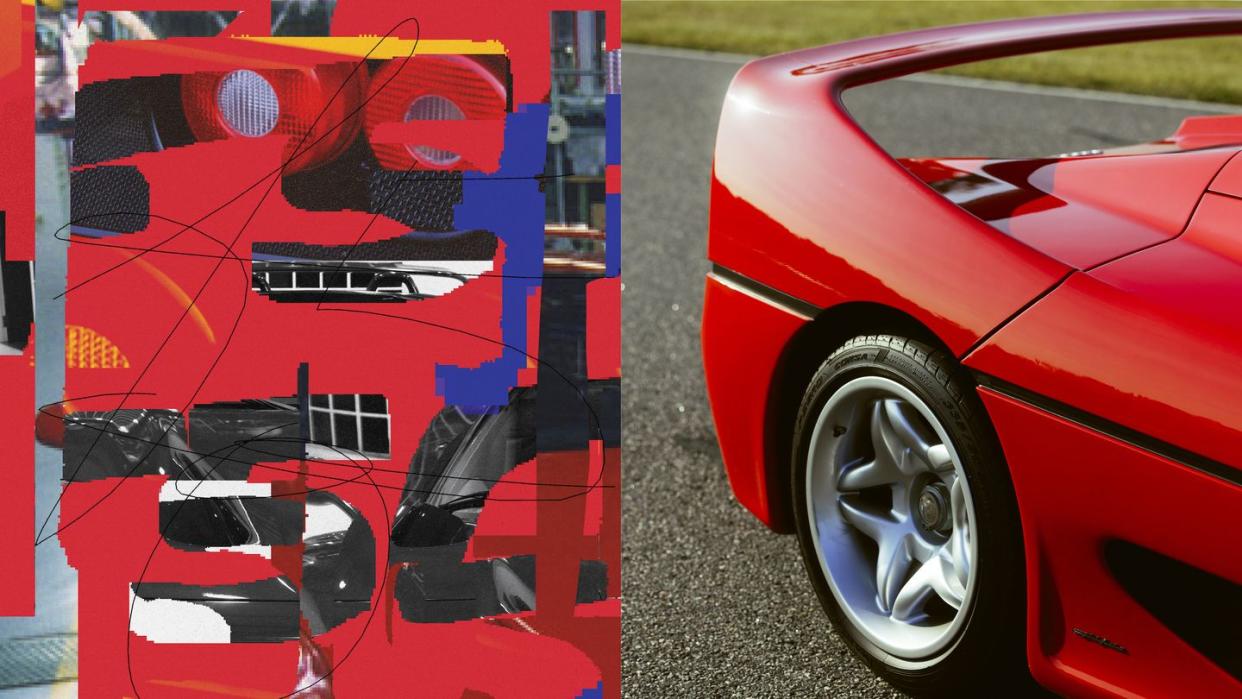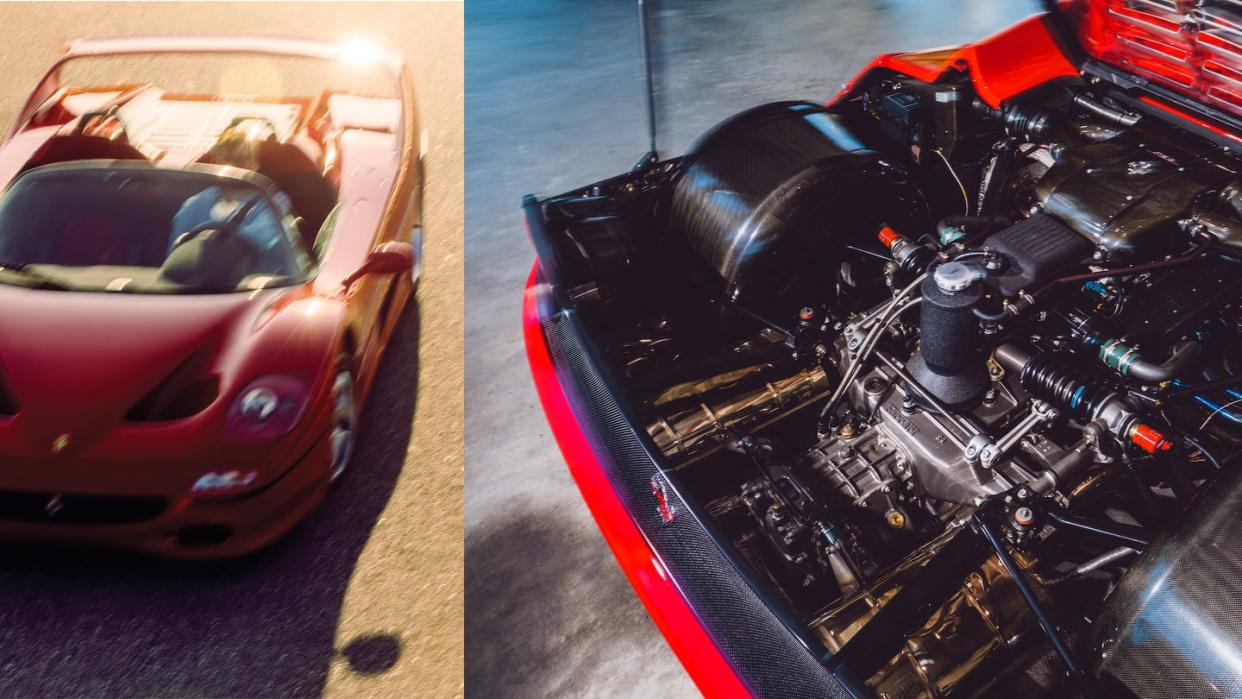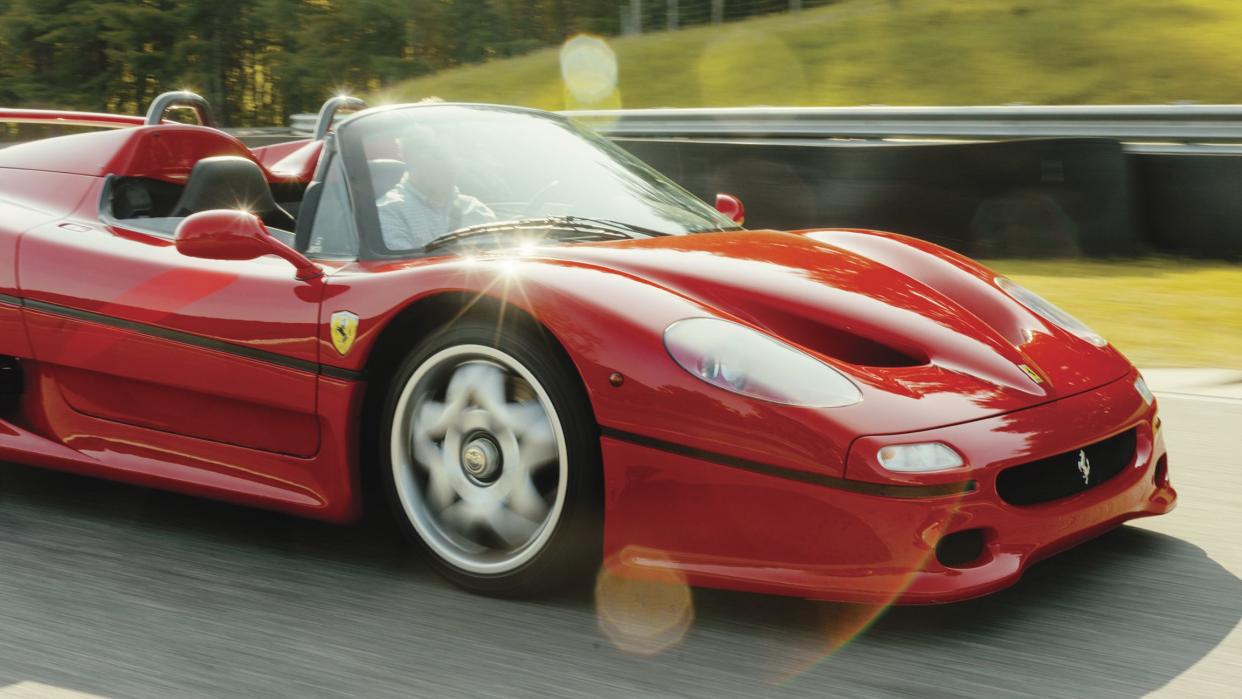The Ferrari F50 Was Panned When It Debuted. Now It Represents Everything We Desire.


The Ferrari F40 is the definitive supercar, a 471-hp twin-turbocharged V-8-powered middle finger that overshadowed everything else of its era. It’s the final road car that Enzo Ferrari personally approved and the first mass-produced car with a claimed top speed of over 200 mph. F40s were listed for $280,000 in 1987. Demand was so high, dealers could command triple that or more.
This story originally appeared in Volume 18 of Road & Track.
In 1995, Ferrari followed the F40 with the F50, a naturally aspirated V-12-powered F1 car for the road. Ferrari didn’t let the press drive the F50 until two years after its release and barred owners from loaning cars to journalists. It was heavier and less elegant, and even though Ferrari said the F50 could hit 202 mph—conveniently one more than the F40—our 1997 test revealed that the gearing would only let it reach the mid-190s. Unforgivable. While the McLaren F1 hit 240 mph and claimed superlatives for power, acceleration, and exclusivity, the F50 became a punching bag.
Even though as a kid I had pinned above my bed an extremely Nineties poster of an F50 parked in shallow water, I maligned the car online, parroted negative reviews, and called it an ugly disappointment and the wrong car to follow the F40—ridiculous things for a teenager without a driver’s license to say.

The F50 ended up being the final analog Ferrari supercar. Its successors—Enzo, LaFerrari, and SF90—embraced complex driver-assist systems, electrification, and turbocharging in pursuit of insane performance. I couldn’t care less about stats that are irrelevant in the real world. I want to be involved. I want to drive. Perhaps the F50 was judged unfairly.
I’d never seen an F50 moving. And I figured this one would arrive at Lime Rock Park in a trailer, but its owner drove two hours to the track. He was going to haul it, but that would have been a hassle, and today is a perfect day. The F50 is impossibly low, the top of the windshield no higher than my hips. I start crawling over it and immediately regret ever calling it ugly. Every angle holds drama, like hidden NACA ducts and paint so thin the carbon fiber’s weave is visible. The driving position is excellent. The interior is minimalist; even the windows are manual. Its build quality is so outrageously precise that it makes the F40 look like it was thrown together by a toddler with a glue gun. And the back half of the F50 deserves a spot in the Uffizi Gallery.
Metal mesh between the taillights gives a teasing glimpse of the V-12, gearbox, and suspension. The F130B—a detuned 4.7-liter version of the engine from Ferrari’s 1990 F1 car—makes 512 hp and 347 lb-ft, slightly more horsepower than the F40 has but a lot less torque. The F50’s V-12 is bolted directly to its carbon-fiber tub. The six-speed manual is affixed to the engine, and the suspension hangs off the gearbox. It’s the sort of arrangement you don’t see outside of motorsport. The F50 has no power steering, no power brake assist, no ABS, and no traction or stability control.

Sounds intimidating, right? A quick press of the starter shatters the silence, the entire car quaking as the V-12 warms. The clutch is perfectly weighted and communicative, and I slide the excellent gated shifter into first using one finger. The F50 demands quick shifts, its engine internals so light that revs drop to idle when you press the clutch. The race-derived engine revs so freely and has such an aggressive lope that it feels illegal. It’s linear and tractable and will manically run to its 8500-rpm redline, where it seems eager to give another 4000 revs. Even better, it spits flames. How anyone could prefer the F40’s turbo lag and peaky power is beyond me.
While the steering rack is slower at low speeds than I expect from a mid-engine Ferrari, it provides adjustability and stability as speed increases. The F50 flows through a corner and then flies as soon as the track straightens out, a V-12 chorus blasting behind. My helmet insulates me from the sound, so I remove it. The engine combined with this particular example’s Tubi exhaust—yes, there’s an aftermarket exhaust specifically for the 349 F50s—produces a voice Rick Rubin wishes he discovered. The F50 doesn’t have a stereo, but who cares when a sound like this ricochets around the inside of my skull?
I keep a moderate pace on the track because I don’t want my great-grandchildren to be born into crushing debt if something goes wrong. But if the F50 is this much of a riot well below the limit, I can imagine how wonderful it would be when pushed. It’s so joyous and alive that I want to cry.
This F50’s owner also has an F40, and he says the F50 is better in every way. I believe him. In 1995, this was a $480,000 car. Now it’s $4.5 million. If Ferrari built a new, wholly analog model that had three pedals and prioritized involvement over numbers, I’m convinced the company could charge eight figures and would have no issue selling every single one. The F50 was always the right car. It just came at the wrong time.

A car-lover’s community for ultimate access & unrivaled experiences.JOIN NOW Hearst Owned
You Might Also Like
